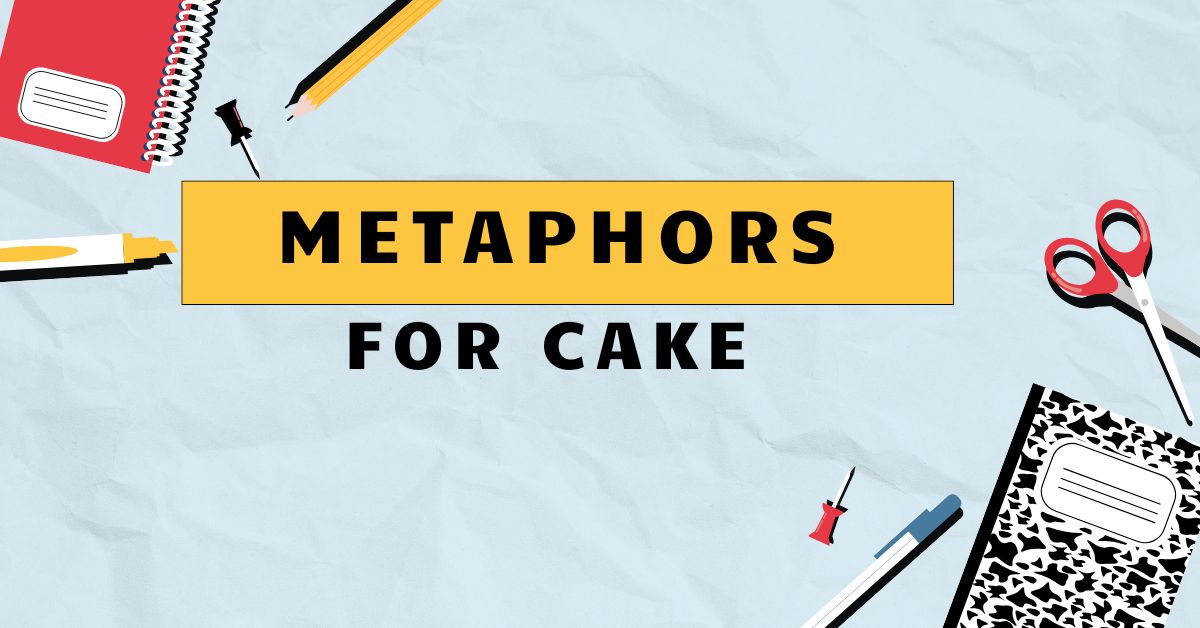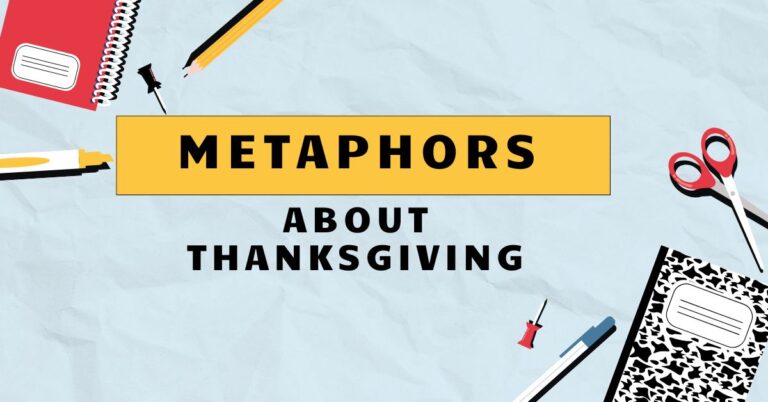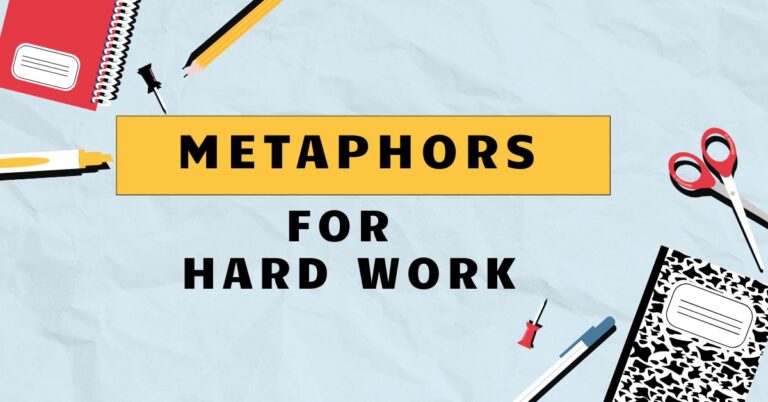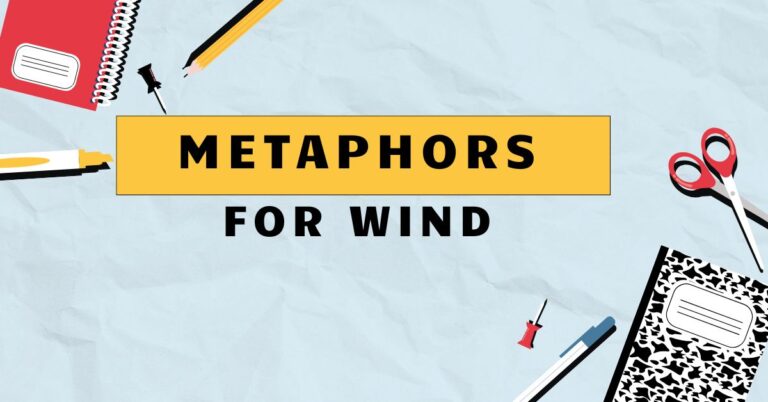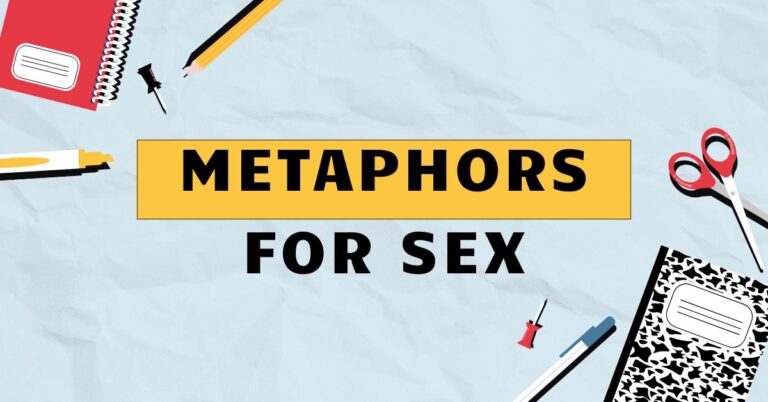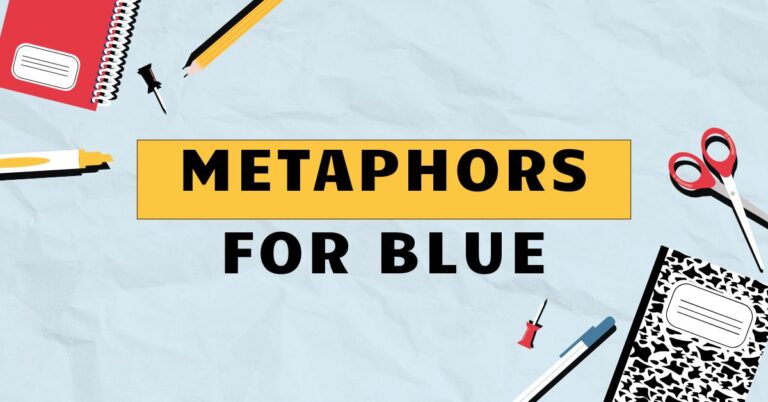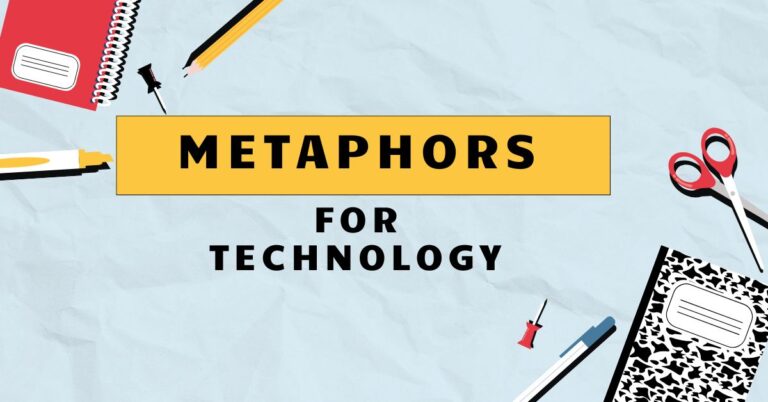47 Metaphors for Cake: A Delicious Dive into Figurative Language
Metaphors are powerful tools in the English language, allowing us to create vivid imagery and deeper understanding by comparing seemingly unrelated things. Exploring metaphors related to “cake” can offer a delightful way to understand how these figures of speech work and how they enrich our communication.
This article will guide you through the different types of metaphors used with cake, their meanings, and how to use them effectively. Whether you’re an English language learner, a creative writer, or simply someone who enjoys the beauty of language, this guide will provide valuable insights and practical exercises.
Table of Contents
- Introduction
- Definition of Metaphor
- Structural Breakdown of Metaphors
- Types of Cake Metaphors
- Examples of Cake Metaphors
- Usage Rules for Cake Metaphors
- Common Mistakes with Cake Metaphors
- Practice Exercises
- Advanced Topics in Metaphorical Language
- Frequently Asked Questions
- Conclusion
Definition of Metaphor
A metaphor is a figure of speech that directly compares two unlike things without using “like” or “as.” It asserts that one thing *is* another, implying a similarity between them. This comparison is not literal but rather suggestive, creating a new understanding or perspective.
Metaphors are essential in language because they allow us to express abstract ideas in concrete terms, making them more accessible and memorable. They add color, depth, and creativity to our writing and speech.
Metaphors are classified as a type of figurative language, falling under the broader category of tropes. They function to transfer meaning from one concept to another, enriching the original concept with new associations.
The context in which a metaphor is used is crucial for its interpretation. Understanding the cultural and emotional connotations associated with the compared items is vital for grasping the intended meaning.
For example, using “cake” as a metaphor can evoke feelings of celebration, indulgence, or sweetness, depending on the specific comparison being made.
Structural Breakdown of Metaphors
A metaphor typically consists of two main elements: thetenorand thevehicle. The tenor is the subject being described, while the vehicle is the object or concept used to describe it.
The vehicle carries the metaphorical meaning and transfers it to the tenor. The relationship between the tenor and vehicle is the basis of the metaphor’s effectiveness.
Consider the metaphor “Life is a cake.” Here, “life” is the tenor, and “cake” is the vehicle. The metaphor suggests that life, like a cake, is made up of various ingredients, requires careful preparation, and can be sweet or bitter depending on the combination of elements.
The effectiveness of this metaphor relies on the shared qualities or associations that the audience has with both life and cake. Recognizing these shared qualities is crucial for understanding the metaphor’s intended meaning.
Furthermore, the context in which the metaphor is used can significantly influence its interpretation. The metaphor’s impact can also depend on the audience’s prior experiences and cultural background.
Types of Cake Metaphors
Metaphors involving cake can be categorized based on the specific aspects of cake they emphasize and the qualities they transfer to the tenor. Here are some common types:
Complexity Metaphors
Cake can represent something complex due to its many ingredients and steps in preparation. These metaphors often describe situations or tasks that seem simple on the surface but are actually intricate and require careful attention.
Reward Metaphors
Cake is often associated with celebrations and treats. These metaphors use cake to symbolize rewards, achievements, or something enjoyable that is earned or deserved.
Life Stage Metaphors
Cake can represent different stages of life, from the initial ingredients (birth) to the final product (maturity). These metaphors explore the various phases and experiences that make up a person’s life journey.
Relationship Metaphors
Cake can symbolize relationships, highlighting the need for the right ingredients (compatible personalities), careful mixing (communication), and patience (commitment) to create a satisfying and lasting bond.
Easy Task Metaphors
While often used to describe complexity, cake can also, in certain contexts, represent something easily attainable or enjoyable. A “piece of cake” is a common idiom that falls into this category.
Examples of Cake Metaphors
Here are some examples of how cake metaphors can be used in different contexts, categorized by the types discussed above:
Complexity Examples
The following table illustrates how “cake” can be used to represent complexity in various situations. Each example uses cake as a vehicle to convey the idea that something is more intricate than it appears.
| Metaphor | Explanation |
|---|---|
| “The project was a cake with many layers, each requiring different skills.” | The project, like a multi-layered cake, involved numerous complex tasks. |
| “Her explanation sounded simple, but the actual process was like baking a complicated cake.” | The process was far more intricate and demanding than initially portrayed. |
| “Navigating the legal system is like trying to bake a cake with a hundred different recipes.” | The legal system is overwhelming and confusing due to its many rules and procedures. |
| “The business deal was a cake made of many ingredients, each with its own risks and rewards.” | The deal involved numerous factors that needed careful consideration. |
| “Building a successful startup is like baking a cake from scratch; every detail matters.” | A startup requires meticulous planning and execution in every aspect. |
| “Understanding quantum physics is like trying to assemble a cake without a recipe.” | Quantum physics is extremely complex and requires deep understanding. |
| “The political landscape is a cake filled with hidden ingredients and unexpected flavors.” | Politics is complex and full of surprises. |
| “Managing a large corporation is like baking a cake for a thousand people; precision is key.” | Managing a corporation requires careful planning and execution to meet everyone’s needs. |
| “Writing a novel is like baking a cake with layers of plot, character, and theme.” | A novel requires careful construction of various elements to create a cohesive story. |
| “The software was like a cake with so many patches and updates that it was collapsing under its own weight.” | The software had become overly complex and unstable due to numerous modifications. |
| “The relationship was a cake with too many cooks, each adding their own unwanted ingredients.” | Too many people were interfering in the relationship, causing problems. |
| “Solving the mystery was like trying to bake a cake with missing ingredients.” | The mystery was difficult to solve due to lack of information. |
| “The negotiation was a cake with each side trying to add more sugar to their own slice.” | Each side was trying to maximize their own gains in the negotiation. |
| “The project’s success was dependent on baking the cake perfectly, with no room for error.” | The project required flawless execution to succeed. |
| “The strategy was a cake with layers of risk assessment and mitigation.” | The strategy involved multiple levels of risk management. |
| “The economic forecast was a cake that no one could accurately predict the taste of.” | The economic forecast was uncertain and unpredictable. |
| “The legal case was a cake with so many precedents that it was hard to find the right recipe.” | The legal case was complex due to the abundance of legal precedents. |
| “The merger was a cake that required blending two distinct flavors into a harmonious whole.” | The merger needed careful integration of two different corporate cultures. |
| “The scientific experiment was like baking a cake, where even the smallest variable could change the outcome.” | The experiment was highly sensitive to even minor changes. |
| “The political campaign was a cake with layers of strategy, messaging, and public relations.” | The campaign involved multiple coordinated efforts. |
| “The international treaty was a cake that required balancing the interests of many different nations.” | The treaty needed to accommodate the diverse needs of various countries. |
| “The medical diagnosis was like trying to bake a cake with symptoms as the only ingredients.” | The diagnosis was challenging due to limited information. |
| “The architectural design was a cake with layers of functionality, aesthetics, and sustainability.” | The design incorporated multiple considerations to meet different needs. |
Reward Examples
These metaphors use cake to represent something desirable, earned, or celebratory. The “cake” symbolizes a positive outcome or benefit.
| Metaphor | Explanation |
|---|---|
| “The promotion was the icing on the cake after years of hard work.” | The promotion was a well-deserved reward for dedication. |
| “Winning the championship was the cake after a season of intense training.” | The victory was a sweet reward after significant effort. |
| “The bonus was a slice of cake after exceeding all sales targets.” | The bonus was a deserved reward for outstanding performance. |
| “Retirement is the cake after a lifetime of labor.” | Retirement is a fulfilling reward after years of working. |
| “The scholarship was the cake that allowed her to pursue her dreams.” | The scholarship provided the opportunity for her to achieve her aspirations. |
| “Their anniversary was a cake, celebrating years of love and commitment.” | The anniversary was a joyous celebration of their relationship. |
| “The successful launch of the product was the cake after months of development.” | The product launch was a rewarding outcome after a long period of work. |
| “Graduation was the cake, marking the end of their academic journey.” | Graduation was a celebratory milestone in their education. |
| “The inheritance was a slice of cake that provided financial security.” | The inheritance offered a sense of financial stability. |
| “The new job was the cake she had been waiting for, offering both challenge and fulfillment.” | The job was a perfect opportunity that she had desired. |
| “The vacation was a cake, providing a much-needed break from the daily grind.” | The vacation was a relaxing and enjoyable escape from routine. |
| “The award ceremony was a cake, recognizing the achievements of the team.” | The ceremony celebrated the team’s accomplishments. |
| “The peace treaty was a cake, bringing an end to years of conflict.” | The treaty was a welcome resolution to the conflict. |
| “The reconciliation was the cake, mending a broken friendship.” | The reconciliation was a joyful restoration of their friendship. |
| “The successful surgery was the cake, restoring his health and vitality.” | The surgery was a positive outcome that improved his well-being. |
| “The book deal was a cake, fulfilling a lifelong dream of becoming an author.” | The book deal was a significant achievement that realized her dream. |
| “The new house was a cake, providing a comfortable and welcoming home.” | The house offered a sense of comfort and belonging. |
| “The invention was a cake, revolutionizing the industry.” | The invention brought about significant positive changes in the industry. |
| “The concert was a cake, delighting fans with their favorite songs.” | The concert was an enjoyable experience for the audience. |
| “The election victory was the cake, granting them the opportunity to lead.” | The victory provided the chance to make a difference. |
| “Volunteering was a cake, offering a sense of purpose and fulfillment.” | Volunteering brought a sense of satisfaction and meaning. |
| “The adoption was a cake, bringing joy to their family.” | The adoption was a heartwarming addition to their family. |
| “The business expansion was a cake, creating new opportunities for growth.” | The expansion brought forth new possibilities for development. |
Life Stage Examples
In these examples, cake represents different phases or experiences in life, highlighting growth, change, and development.
| Metaphor | Explanation |
|---|---|
| “Childhood is the first slice of the cake of life, sweet and innocent.” | Childhood is a carefree and enjoyable stage of life. |
| “Adolescence is like a cake baking, full of rising potential but still needing time to mature.” | Adolescence is a period of growth and development, but requires patience. |
| “Marriage is like baking a cake together, requiring cooperation and compromise.” | Marriage involves shared effort and mutual understanding. |
| “Parenthood is like adding a new layer to the cake of life, enriching and complex.” | Parenthood brings new dimensions and responsibilities to life. |
| “Midlife is like the middle layer of a cake, a time for reflection and reevaluation.” | Midlife is a period of introspection and adjustment. |
| “Old age is like the final slice of cake, savoring the memories and experiences of a lifetime.” | Old age is a time to appreciate past events and wisdom. |
| “Each birthday is like adding a new candle to the cake, celebrating another year of life.” | Birthdays are occasions to commemorate life’s milestones. |
| “Life is a cake with many flavors, some sweet, some bitter, but all contributing to the overall experience.” | Life consists of various experiences, both positive and negative. |
| “A career is like baking a cake, starting with the basic ingredients and building to a finished product.” | A career involves progressive development and growth. |
| “Each day is like a slice of cake, offering new opportunities and possibilities.” | Every day presents fresh potential and experiences. |
| “Learning is like adding new ingredients to the cake of knowledge, enriching understanding.” | Education enhances one’s comprehension and awareness. |
| “Friendship is like a cake, needing the right ingredients to create a lasting bond.” | Friendship requires compatible personalities and mutual support. |
| “Love is like the frosting on the cake, making life sweeter and more enjoyable.” | Love enhances the pleasure and fulfillment of life. |
| “Success is like the perfectly baked cake, requiring effort, patience, and skill.” | Achieving success demands dedication and expertise. |
| “Failure is like a burnt cake, a learning experience to improve future attempts.” | Setbacks provide opportunities for growth and improvement. |
| “Memories are like the flavors in a cake, each one unique and contributing to the overall experience.” | Memories shape and enrich our lives. |
| “Dreams are like the recipe for a cake, guiding us towards our goals.” | Dreams inspire and direct our actions. |
| “Hope is like the rising of the cake in the oven, promising a bright future.” | Hope offers encouragement and optimism. |
| “Resilience is like the ability to bake a new cake after the first one fails, showing determination.” | Resilience demonstrates strength and perseverance. |
| “Growth is like the increasing layers of a cake, each one building on the previous.” | Development involves continuous progress and expansion. |
| “Wisdom is like the perfect recipe for the cake of life, guiding us to make the best choices.” | Wisdom aids in making sound decisions. |
| “Challenges are like the unexpected ingredients in a cake, adding unique flavors to life.” | Difficulties create unique experiences and opportunities for growth. |
| “Change is like the different recipes for cake, each offering a new and exciting experience.” | Transitions provide new perspectives and opportunities. |
Relationship Examples
These metaphors illustrate how relationships can be likened to cake, emphasizing the necessary ingredients, care, and attention required for a successful bond.
| Metaphor | Explanation |
|---|---|
| “Their relationship was a cake built on trust and mutual respect.” | The relationship was founded on strong principles of trust and respect. |
| “A successful marriage is like baking a cake together, requiring equal effort and shared ingredients.” | A good marriage needs both partners to contribute equally. |
| “Friendship is like a cake that needs regular nurturing to stay fresh and flavorful.” | Friendship requires ongoing care and attention. |
| “A healthy family is like a well-baked cake, with each member contributing to its overall sweetness.” | A strong family relies on the contributions of each individual. |
| “Love is the frosting on the cake of a relationship, adding sweetness and joy.” | Love enhances the happiness and fulfillment of a relationship. |
| “Communication is the key ingredient in the cake of a strong relationship.” | Open and honest communication is essential for a healthy relationship. |
| “Compromise is like balancing the flavors in a cake, ensuring that everyone is satisfied.” | Compromise ensures that everyone’s needs are met. |
| “Forgiveness is like smoothing out the imperfections in a cake, making it whole again.” | Forgiveness restores harmony to a relationship. |
| “Understanding is like knowing the recipe for a cake, ensuring that the relationship is built on a solid foundation.” | Mutual understanding is crucial for a strong relationship. |
| “Patience is like waiting for the cake to bake, allowing the relationship to develop naturally.” | Patience allows a relationship to grow at its own pace. |
| “Trust is like the foundation of a cake, providing a stable base for the relationship.” | Trust is essential for the stability of a relationship. |
| “Respect is like the careful layering of a cake, building a strong and lasting bond.” | Respect fosters a deep and enduring connection. |
| “Honesty is like the pure ingredients in a cake, ensuring the relationship is genuine and sincere.” | Honesty ensures the authenticity of a relationship. |
| “Support is like the structure that holds the cake together, providing strength during difficult times.” | Support offers stability and resilience in a relationship. |
| “Loyalty is like the consistent flavor of a cake, ensuring a dependable and steadfast relationship.” | Loyalty provides reliability and consistency in a relationship. |
| “Empathy is like understanding the recipe for someone else’s cake, appreciating their unique experiences.” | Empathy allows for a deeper understanding of others. |
| “Shared interests are like the common ingredients in a cake, creating a shared sense of enjoyment.” | Shared interests foster a sense of connection and enjoyment. |
| “Quality time is like savoring each slice of cake, appreciating the moments spent together.” | Quality time enhances the value of a relationship. |
| “Appreciation is like adding extra frosting to the cake, showing gratitude and affection.” | Appreciation demonstrates gratitude and strengthens the bond. |
| “Kindness is like the sweetness of the cake, making the relationship more enjoyable.” | Kindness enhances the pleasure and comfort of a relationship. |
| “A broken relationship is like a cake that has fallen apart, difficult to piece back together.” | A damaged relationship is hard to repair. |
| “Jealousy is like a bitter ingredient in the cake of a relationship, spoiling its sweetness.” | Jealousy can ruin the positive aspects of a relationship. |
| “Neglect is like forgetting to bake the cake, leading to a stale and lifeless relationship.” | Neglect can cause a relationship to deteriorate. |
Easy Task Examples
These examples use the idiom “piece of cake” to represent tasks that are simple or easily accomplished. The cake symbolizes something effortless and straightforward.
| Metaphor | Explanation |
|---|---|
| “The exam was a piece of cake; I finished it in half the time.” | The exam was very easy. |
| “Fixing the computer was a piece of cake for the experienced technician.” | The technician found the repair very simple. |
| “Learning to ride a bike was a piece of cake for her; she picked it up in no time.” | She learned to ride a bike very easily. |
| “The presentation was a piece of cake after weeks of preparation.” | The presentation was easy because of thorough preparation. |
| “Getting the promotion was a piece of cake, given his outstanding performance.” | He easily obtained the promotion due to his excellent work. |
| “The recipe was a piece of cake to follow, even for a beginner cook.” | The recipe was very easy to understand and execute. |
| “Solving the puzzle was a piece of cake for the child prodigy.” | The child prodigy easily solved the puzzle. |
| “Winning the race was a piece of cake for the seasoned athlete.” | The athlete easily won the race. |
| “Negotiating the deal was a piece of cake for the skilled diplomat.” | The diplomat easily negotiated the deal. |
| “Organizing the event was a piece of cake with such a dedicated team.” | The event was easily organized because of the team’s dedication. |
| “Remembering the lines was a piece of cake for the experienced actor.” | The actor easily memorized the lines. |
| “Navigating the city was a piece of cake with the help of the GPS.” | It was easy to navigate the city using the GPS. |
| “Assembling the furniture was a piece of cake with the clear instructions.” | The furniture was easily assembled following the instructions. |
| “The interview was a piece of cake; the questions were straightforward.” | The interview was easy because the questions were simple. |
| “Getting the visa was a piece of cake with all the required documents.” | It was easy to get the visa with the necessary paperwork. |
| “The training session was a piece of cake, covering basic skills.” | The training session was easy because it covered fundamental skills. |
| “Cleaning the house was a piece of cake with the new cleaning supplies.” | It was easy to clean the house with the new supplies. |
| “The presentation was a piece of cake after rehearsing it multiple times.” | The presentation was easy after thorough rehearsal. |
| “Winning the game was a piece of cake, as the opponent was inexperienced.” | It was easy to win the game against an inexperienced opponent. |
| “The coding task was a piece of cake for the senior developer.” | The senior developer found the coding task very simple. |
Usage Rules for Cake Metaphors
When using cake metaphors, it’s important to ensure that the comparison is clear and relevant. The qualities of cake that you are emphasizing should align with the characteristics of the subject you are describing.
Avoid mixed metaphors, where the comparison becomes confusing or illogical. Maintain consistency in your metaphorical language to avoid confusing the audience.
Always consider the context and audience when using metaphors; some metaphors may be more effective in certain situations than others.
Clarity:Ensure the connection between the cake and the subject is easily understandable. The shared qualities should be evident.Relevance:The metaphor should highlight relevant aspects of the subject.
Avoid comparisons that are superficial or misleading.Consistency:Stick to a consistent metaphorical framework. Mixing metaphors can lead to confusion and weaken the impact.Context:Consider the audience and the situation.
Some metaphors may be more appropriate or effective in certain contexts.Originality:While common metaphors can be effective, try to create unique and fresh comparisons to make your writing more engaging.
Common Mistakes with Cake Metaphors
One common mistake is using mixed metaphors, where the comparison becomes illogical. For example, “The project was a piece of cake sailing on a rough sea” combines two unrelated metaphors, creating a confusing image.
Another mistake is using clichés without adding any originality or depth. Overused metaphors can lose their impact and make your writing seem uninspired.
Also, ensure that the metaphor is appropriate for the context and audience. A metaphor that works well in one situation may not be effective in another.
| Incorrect | Correct | Explanation |
|---|---|---|
| “The presentation was a piece of cake, but also a mountain to climb.” | “The presentation was a piece of cake after all the preparation.” | Avoid mixing metaphors that present contradictory images. |
| “Life is a cake, sail the ocean.” | “Life is a cake, enjoy every slice.” | Ensure the metaphor remains consistent and logical. |
| “Their relationship was a cake in a storm.” | “Their relationship was a cake that needed constant nurturing.” | The vehicle should align with the tenor. |
| “The job was a piece of cake, but also a maze to navigate.” | “The job was a piece of cake, requiring minimal effort.” | Avoid combining unrelated images. |
| “The project was a cake, but also a rollercoaster ride.” | “The project was a cake, with many layers to complete.” | Maintain a consistent metaphorical framework. |
Practice Exercises
Test your understanding of cake metaphors with these exercises. Identify the type of metaphor used in each sentence and explain its meaning.
Then, create your own sentences using cake metaphors.
| Question | Answer |
|---|---|
| 1. The negotiation was a cake, with each side trying to get the biggest slice. What type of metaphor is this? | Reward metaphor. Each side wants the biggest benefit. |
| 2. Life is a cake with many layers, each representing a different experience. What type of metaphor is this? | Life stage metaphor. Each layer symbolizes a phase of life. |
| 3. Fixing the car was a piece of cake for the mechanic. What type of metaphor is this? | Easy task metaphor. The task was simple for the mechanic. |
| 4. Their marriage was a cake that needed constant attention and care. What type of metaphor is this? | Relationship metaphor. Marriage requires nurturing. |
| 5. The project was like baking a cake, with each step requiring precision. What type of metaphor is this? | Complexity metaphor. The project required meticulous execution. |
| 6. The promotion was the icing on the cake after years of dedicated service. What type of metaphor is this? | Reward metaphor. The promotion was a well-deserved bonus. |
| 7. Adolescence is like a cake still baking, full of potential but not yet fully formed. What type of metaphor is this? | Life stage metaphor. Adolescence is a period of growth and development. |
| 8. Getting the visa turned out to be a piece of cake, much to my relief. What type of metaphor is this? | Easy task metaphor. Obtaining the visa was surprisingly simple. |
| 9. Their friendship is a cake that requires regular communication to stay fresh and strong. What type of metaphor is this? | Relationship metaphor. Friendship needs consistent effort and interaction. |
| 10. Building the new software was like baking a complex cake, with numerous dependencies and intricate code. What type of metaphor is this? | Complexity metaphor. The software development involved multiple intricate elements. |
Create your own sentences using cake metaphors:
- Use a cake metaphor to describe a challenging task at work.
- Use a cake metaphor to describe the feeling of achieving a long-term goal.
- Use a cake metaphor to describe a close friendship.
- Use a cake metaphor to describe the process of learning a new skill.
- Use a cake metaphor to describe a family celebration.
- Use a cake metaphor to describe a period of personal growth.
- Use a cake metaphor to describe a difficult decision.
- Use a cake metaphor to describe the feeling of being appreciated.
- Use a cake metaphor to describe a successful team project.
- Use a cake metaphor to describe the process of writing a book.
Advanced Topics in Metaphorical Language
For advanced learners, exploring the theoretical underpinnings of metaphor, such as Conceptual Metaphor Theory, can provide a deeper understanding of how metaphors shape our thinking. This theory suggests that metaphors are not just linguistic devices but fundamental cognitive structures that influence how we perceive and understand the world.
Studying the use of extended metaphors, where a single metaphor is developed and elaborated throughout a text, can also enhance your analytical skills. Additionally, analyzing how metaphors are used in different cultural contexts can provide insights into the cultural values and beliefs reflected in language.
Delving into the philosophical aspects of metaphor can reveal how metaphors contribute to the construction of meaning and knowledge. Exploring the works of philosophers like Paul Ricoeur and Max Black can provide a richer understanding of the role of metaphor in shaping our understanding of reality.
Furthermore, examining the use of metaphors in literature, poetry, and rhetoric can offer valuable insights into their persuasive and artistic power. By studying these advanced topics, you can develop a more nuanced and sophisticated understanding of metaphorical language.
Frequently Asked Questions
- What is the difference between a metaphor and a simile?
A metaphor directly compares two unlike things, stating that one *is* the other (e.g., “Life is a cake”). A simile also compares two unlike things, but it uses “like” or “as” to make the comparison (e.g., “Life is like a cake”). Similes are more explicit in their comparison, while metaphors are more implicit and suggestive.
- How can I improve my ability to understand metaphors?
Improving your understanding of metaphors involves expanding your vocabulary, reading widely, and paying attention to the context in which metaphors are used
Consider the cultural and emotional associations of the compared items. Practice identifying the tenor and vehicle in different metaphors and analyzing their shared qualities. Additionally, exposing yourself to diverse texts and viewpoints can enhance your ability to interpret metaphorical language.
- Are metaphors universal, or do they vary across cultures?
While some metaphors may be universally understood due to shared human experiences, many metaphors are culturally specific. Cultural values, beliefs, and experiences influence the way metaphors are constructed and interpreted. Understanding the cultural context is crucial for accurately interpreting metaphors from different cultures. Some metaphors may not translate directly or may have different connotations in different cultural settings.
- Can metaphors be used in formal writing?
Yes, metaphors can be used in formal writing, but they should be used judiciously. In formal writing, metaphors should enhance clarity and understanding rather than detract from it. Avoid using overly creative or obscure metaphors that may confuse the reader. Ensure that the metaphor is appropriate for the tone and audience of the writing. When used effectively, metaphors can add depth and nuance to formal writing.
- What are some common sources of metaphors?
Common sources of metaphors include nature, animals, everyday objects, and human experiences. These sources provide a rich reservoir of images and associations that can be used to create meaningful comparisons. Metaphors often draw on shared cultural knowledge and experiences, making them relatable and accessible. Understanding these common sources can help you generate and interpret metaphors more effectively.
- How do metaphors contribute to persuasive writing?
Metaphors contribute to persuasive writing by making abstract ideas more concrete and relatable. They can evoke emotions, create vivid imagery, and influence the reader’s perception of the subject. Metaphors can also be used to frame arguments in a compelling and memorable way. By using metaphors strategically, writers can enhance the persuasiveness and impact of their message.
Conclusion
Metaphors are a delicious and versatile tool in language, offering a way to add depth, color, and creativity to our communication. By understanding the different types of cake metaphors and how to use them effectively, you can enhance your writing and speaking skills.
Whether you’re describing complexity, reward, life stages, relationships, or easy tasks, cake metaphors can provide a sweet and memorable way to convey your message. So go ahead, indulge in the richness of metaphorical language and savor the many flavors it has to offer.

